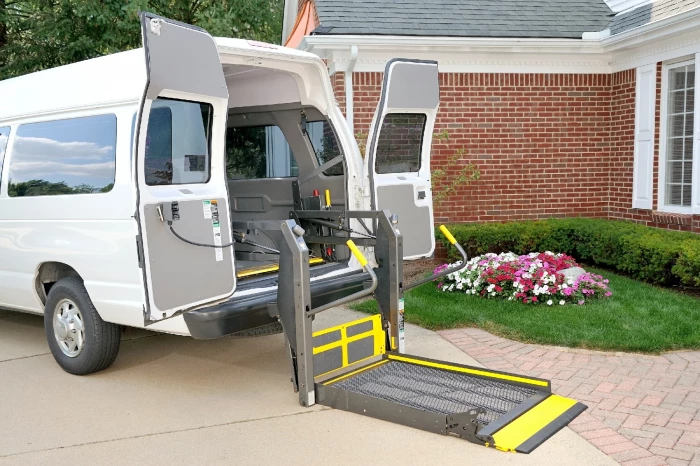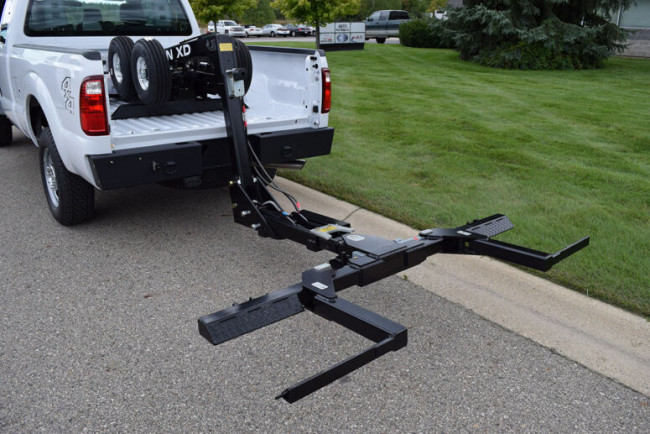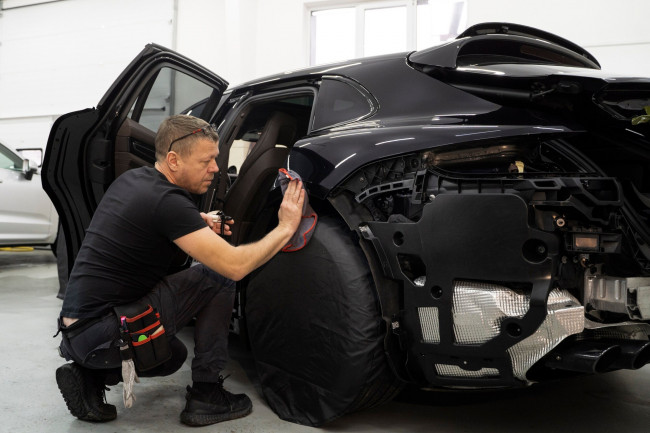In the realm of healthcare, access to reliable transportation is a critical factor in ensuring that patients receive timely and effective care. Non-emergency medical transportation (NEMT) services play a pivotal role in bridging the gap between healthcare facilities and patients, particularly for those who are wheelchair-bound, elderly, or have mobility challenges. One of the most crucial aspects of NEMT services is the quality and training of the drivers. Trained drivers not only ensure the safety and comfort of the patients but also enhance the overall efficiency and reliability of the service. In this article, we will delve into the importance of trained drivers in NEMT services and why they are essential for providing the best transport services for wheelchair-bound seniors.

Ensuring Patient Safety
An NEMT driver's primary responsibility is to ensure their passengers' safety. Patients who require NEMT services often have medical conditions that make them vulnerable to sudden health complications. Trained drivers are equipped with the skills and knowledge to handle such situations calmly and effectively. They are trained in first aid and CPR, enabling them to provide immediate assistance in case of an emergency. Furthermore, they are familiar with the specific needs of patients, such as those who are wheelchair-bound, and know how to properly secure wheelchairs and other mobility devices to prevent accidents during transit.
Enhancing Comfort and Dignity
For many patients, especially seniors and those with chronic illnesses, the journey to a healthcare facility can be physically and emotionally taxing. Trained NEMT drivers understand the importance of providing their passengers a comfortable and dignified experience. They are trained to assist patients with boarding and alighting from the vehicle, ensuring that the process is smooth and stress-free. Additionally, they are taught to be compassionate and patient, recognizing that their passengers may be dealing with pain, anxiety, or other health-related challenges. By offering a supportive and respectful environment, trained drivers help to alleviate some of the stress associated with medical appointments.
Expertise in Vehicle Operation and Maintenance
Non-emergency medical transportation (NEMT) vehicles are designed with a range of specialized equipment to meet the diverse needs of patients. This equipment often includes wheelchair lifts, ramps, securement systems, and other accessibility features that are essential for safely transporting individuals with mobility challenges. The proper operation and maintenance of these vehicles and their equipment are crucial to ensuring the safety, comfort, and overall experience of passengers.
Specialized Equipment and Its Importance
Wheelchair Lifts and Ramps: Wheelchair lifts and ramps are fundamental components of NEMT vehicles that allow patients who use wheelchairs to board and disembark from the vehicle with ease. These devices must be operated correctly to avoid accidents and ensure that patients can enter and exit the vehicle safely.
Securement Systems: Securement systems are used to safely anchor wheelchairs and other mobility devices inside the vehicle. Proper use of these systems prevents the movement of wheelchairs during transit, which is essential for the safety of the patient. Incorrectly secured wheelchairs can lead to dangerous situations, including tipping over or sliding within the vehicle.
Medical Equipment: Some NEMT vehicles are equipped with additional medical equipment to accommodate the specific needs of patients, such as oxygen tanks, stretchers, or specialized seating. Drivers must be trained to operate and maintain this equipment to ensure it functions correctly and meets the patient's needs.
Training for Technical Knowledge and Skill
Trained NEMT drivers possess the technical knowledge necessary to operate and maintain the specialized equipment in their vehicles. This includes:
Operation Training: Drivers receive detailed training on how to operate wheelchair lifts, ramps, and securement systems. They learn the correct procedures for deploying and retracting lifts, assisting patients onto ramps, and securing wheelchairs and other devices. This training ensures that drivers can perform these tasks efficiently and safely.
Maintenance Training: Regular maintenance is critical to the reliability and safety of NEMT vehicles. Drivers are trained to conduct routine inspections and maintenance checks on all equipment. This includes checking the functionality of lifts and ramps, ensuring securement systems are in good working order, and verifying that all medical equipment is properly maintained and sanitized.
Preventive Measures: Trained drivers are vigilant about identifying potential issues before they become problems. This proactive approach to maintenance helps to prevent mechanical failures and reduces the likelihood of accidents. For example, a driver might notice that a wheelchair lift is making an unusual noise and report it for maintenance before it fails during a patient transfer.
Emergency Preparedness: In addition to routine maintenance, drivers are trained to handle emergencies related to equipment failure. They know how to safely manage situations where a lift or ramp malfunctions, ensuring that the patient remains safe while waiting for assistance or repair.
Benefits of Proper Operation and Maintenance
The benefits of having trained drivers who are proficient in the operation and maintenance of NEMT vehicles and equipment are numerous:
Safety: The foremost benefit is the enhanced safety of passengers. Properly maintained and operated equipment significantly reduces the risk of accidents and injuries, providing a secure environment for patients.
Reliability: Regular maintenance and vigilant operation ensure that NEMT vehicles are reliable and ready for service at all times. This reliability is crucial for patients who depend on timely transportation to and from medical appointments.
Comfort: Ensuring that all equipment is functioning correctly contributes to the overall comfort of the patient. Smooth operation of lifts and securement systems means that patients experience a gentle and stable ride, which is particularly important for those with health issues that make them sensitive to jostling or sudden movements.
Peace of Mind: For both patients and their families, knowing that the NEMT service employs trained drivers who are capable of properly handling specialized equipment provides peace of mind. They can trust that the transportation service will be safe and reliable, which is especially important for vulnerable individuals.
Efficiency: Trained drivers who are knowledgeable about their vehicle's equipment can perform their duties more efficiently. They can quickly and safely assist patients, reducing the time spent on boarding and disembarking and ensuring that appointments are not missed due to transportation delays.
Navigating Complex Routes and Schedules
Non-emergency medical transportation services often involve navigating complex routes and adhering to strict schedules to ensure that patients arrive at their appointments on time. Trained drivers are skilled in route planning and time management, allowing them to efficiently transport patients even in congested urban areas or unfamiliar locations. They are also adept at handling unforeseen circumstances such as traffic delays or road closures, ensuring that patients reach their destinations without unnecessary stress or delays. This reliability is particularly important for patients who require frequent medical appointments or treatments.
Legal and Regulatory Compliance
The NEMT industry is subject to various regulations and standards designed to protect the safety and rights of patients. Trained drivers are well-versed in these regulations and are committed to maintaining compliance at all times. This includes adhering to protocols for patient confidentiality, following guidelines for safe vehicle operation, and maintaining accurate records of trips and services provided. By ensuring compliance with legal and regulatory requirements, trained drivers help to uphold the integrity and reputation of the NEMT service provider.
Building Trust and Rapport with Patients
For many patients, especially those who rely on NEMT services regularly, the driver becomes a familiar and trusted figure. Trained drivers understand the importance of building rapport with their passengers and strive to create a positive and reassuring experience. This personal connection can make a significant difference in the overall well-being of patients, providing them with a sense of security and confidence in the service. Trustworthy and compassionate drivers can also serve as a vital communication link between patients and healthcare providers, ensuring that any concerns or special needs are promptly addressed.
Best Practices for NEMT Driver Training
Given the critical role that drivers play in NEMT services, comprehensive training programs are essential. Effective NEMT driver training should encompass the following areas:
Medical Emergency Response: Training in first aid, CPR, and basic medical emergency response to handle potential health crises during transit.
Patient Assistance and Handling: Techniques for safely assisting patients with mobility challenges, including proper use of wheelchair lifts and securement systems.
Vehicle Operation and Maintenance: Instruction on the operation and maintenance of specialized NEMT vehicles and equipment to ensure safety and reliability.
Route Planning and Navigation: Skills in route planning, time management, and navigation to ensure timely and efficient transportation.
Legal and Regulatory Compliance: Familiarity with industry regulations, patient confidentiality protocols, and record-keeping requirements.
Communication and Customer Service: Training in effective communication, empathy, and customer service to build rapport and trust with patients.
By investing in comprehensive training programs, NEMT service providers can ensure that their drivers are well-equipped to deliver high-quality, reliable, and compassionate care to their passengers.
Conclusion
Trained drivers are the cornerstone of successful non-emergency medical transportation services. They play a vital role in ensuring the safety, comfort, and well-being of patients, particularly those who are wheelchair-bound or have other mobility challenges. By providing the best transport services for wheelchair-bound seniors, trained drivers contribute to improved access to healthcare, enhanced patient satisfaction, and a higher quality of life for those in need. As the demand for NEMT services continues to grow, the importance of investing in driver training and development cannot be overstated. Through comprehensive training programs and a commitment to excellence, NEMT service providers can make a meaningful difference in the lives of their patients and their communities.













